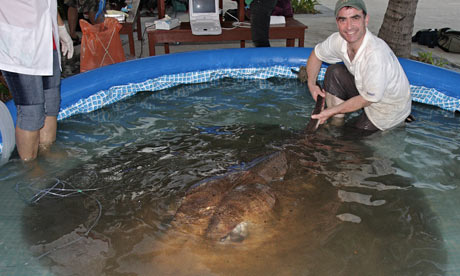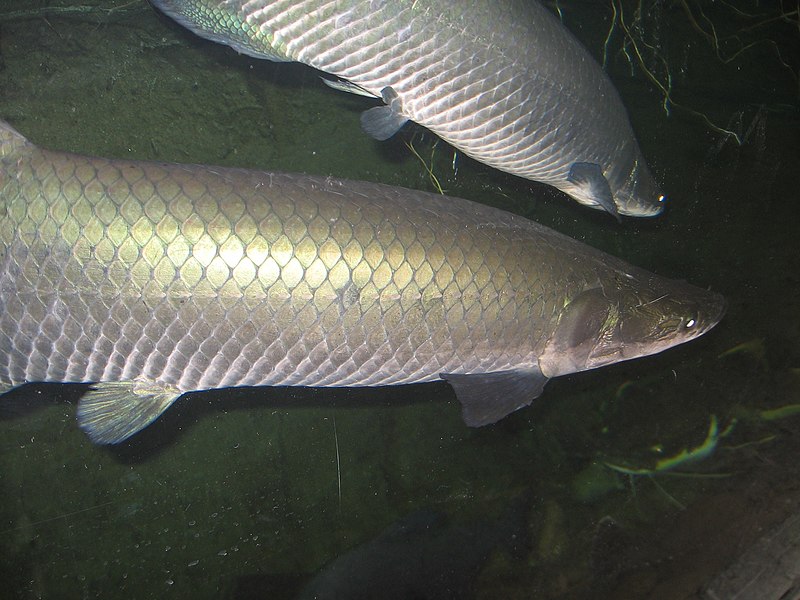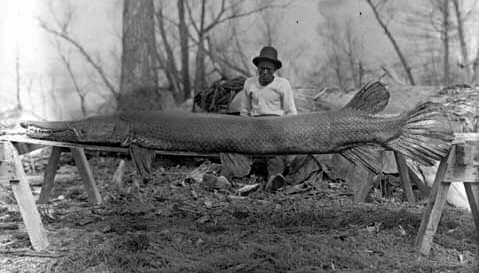Dave here. Recently we’ve been getting some new items in at TFP worth taking a look at, so I thought I’d take Wednesday’s post and give an overview of a few of them.
1 . Frag Racks from EShopps
 As our recent frag swap can attest (take a look here), lots of folks are fragging these days. These new racks are really inexpensive, and ridiculously handy at keeping the little guys going, even within your main tank. They attach with magnets too rather than crappy suction cups. The clear-ness is great too because it doesn’t obsruct the view of your tank all that much. They’re available in corner and straight versions too. Check them out online, or stop by the retail store. Our main frag tank has one installed.
As our recent frag swap can attest (take a look here), lots of folks are fragging these days. These new racks are really inexpensive, and ridiculously handy at keeping the little guys going, even within your main tank. They attach with magnets too rather than crappy suction cups. The clear-ness is great too because it doesn’t obsruct the view of your tank all that much. They’re available in corner and straight versions too. Check them out online, or stop by the retail store. Our main frag tank has one installed.
2. Fluval E-Series Aquarium Heaters
 Haven’t actually had a chance to try one of these out yet, but the reviews have been nothing but favorable. Anyone who’s ever had a heater breakdown and ruin your tank, or accidently broke the sleeve on your tank wall, will be impressed by the Fluval Es. Each one uses an LCD display to report the temperature, and actually uses a color coded system to alert you when the temperature fluctuates plus or minus 2 degrees. A fish guard keeps the sleeve away from tank walls and your fish. Temperature sets to the nearest .5 of a degree to for more specialized jobs. Basically, they’re the Rolls-Royce’s of aquarium heaters at this point. Take a look at the Fluval E Series heaters here.
Haven’t actually had a chance to try one of these out yet, but the reviews have been nothing but favorable. Anyone who’s ever had a heater breakdown and ruin your tank, or accidently broke the sleeve on your tank wall, will be impressed by the Fluval Es. Each one uses an LCD display to report the temperature, and actually uses a color coded system to alert you when the temperature fluctuates plus or minus 2 degrees. A fish guard keeps the sleeve away from tank walls and your fish. Temperature sets to the nearest .5 of a degree to for more specialized jobs. Basically, they’re the Rolls-Royce’s of aquarium heaters at this point. Take a look at the Fluval E Series heaters here.
3. Instant Ocean Salt in the 200 gal – Pro Sized Box
 Ok, I’ll admit, sometimes having the empty salt bucket around for water changes and stuff is pretty handy, but Instant Ocean’s new ProSized Salt-in-a-box helps save waste/make things more green/Save the Planet…all that stuff. Cardboard is way more biodegadeable and friendly than the oil-rich plastics processing that takes place with the good ol’ 160 gal bucket, so as a reef enthusiast, it seems like the way to go. Each box has 4, 50-gal bags so you can actually dump it into your old salt bucket. Take a look at Instant Ocean Salt-in-a-box here.
Ok, I’ll admit, sometimes having the empty salt bucket around for water changes and stuff is pretty handy, but Instant Ocean’s new ProSized Salt-in-a-box helps save waste/make things more green/Save the Planet…all that stuff. Cardboard is way more biodegadeable and friendly than the oil-rich plastics processing that takes place with the good ol’ 160 gal bucket, so as a reef enthusiast, it seems like the way to go. Each box has 4, 50-gal bags so you can actually dump it into your old salt bucket. Take a look at Instant Ocean Salt-in-a-box here.
Anyway, these are just of the few of the cool things coming into ThatFishPlace.com. For a l ist of all of our new Aquarium Items, click here.
Until next time,
Dave
 That Fish Blog – Aquarium Advice and Information
That Fish Blog – Aquarium Advice and Information

 Melissa here. Well, summer is just ahead and I was thinking about what I had done past summers for amusement. One particular mini-vacation popped into my mind. I found myself in Emerald Island, North Carolina after a summer class had ended. When my parents and I arrived at the beach I walked up and down the beach for hours identifying things I remembered seeing in my class. I found one particularly unusual jellyfish. Looking at the jellyfish laying on the sand the bright blue with purple caught my eye. Definitely didn’t remember seeing any of those. I thought it was cool so I scooped it up in the bucket I had been carrying. I wanted to take it back to my car to identify what kind of jellyfish I had found. Before identifying it i wanted to clean off some of the sand. I assumed that it had been on the beach for a while and was probably dead. I was trying to be careful since I knew most jellyfish could still sting many hours after they washed up on the beach. As I was attempting to wash the sand off a few of the tentacles must have sneaked out of the bucket and brushed up against my foot and across my hand. I didn’t feel anything right away. When I started walking back to the car I felt something burning across my foot and hand. Sure enough, when I looked down there were bright red streak marks becoming visible. Once I got back to the car my hand and foot felt like they were on fire. I got my field guide and was shocked to see that I had found a Portuguese Man O’ War. In big bold letters under the name it said, “DO NOT TOUCH, DO NOT COLLECT”. Immediately I thought, “O crap, what have I gotten myself into?” I knew I had to tell my parents in case it got worse and they have to find me a hospital. I grabbed a bottle if ice from the cooler in the car and headed back to find mom to let her know I had a slight little problem. When I told her what had happened and showed her the red streaks, lets just say she was less than thrilled. She told me that we were keeping the “creature” in case I had to go to the hospital. I guess she wanted the blob as proof of what stung me since she had no idea what it was. After 4 hours or so it still stung and burned. By this point there was also some minor swelling. The only thing that helped a little was keeping my foot and hand iced. Around noon the next day the red streaks were still visible but it didn’t hurt anymore. I guess I was lucky that is all the reaction I got since I am allergic to bee stings.
Melissa here. Well, summer is just ahead and I was thinking about what I had done past summers for amusement. One particular mini-vacation popped into my mind. I found myself in Emerald Island, North Carolina after a summer class had ended. When my parents and I arrived at the beach I walked up and down the beach for hours identifying things I remembered seeing in my class. I found one particularly unusual jellyfish. Looking at the jellyfish laying on the sand the bright blue with purple caught my eye. Definitely didn’t remember seeing any of those. I thought it was cool so I scooped it up in the bucket I had been carrying. I wanted to take it back to my car to identify what kind of jellyfish I had found. Before identifying it i wanted to clean off some of the sand. I assumed that it had been on the beach for a while and was probably dead. I was trying to be careful since I knew most jellyfish could still sting many hours after they washed up on the beach. As I was attempting to wash the sand off a few of the tentacles must have sneaked out of the bucket and brushed up against my foot and across my hand. I didn’t feel anything right away. When I started walking back to the car I felt something burning across my foot and hand. Sure enough, when I looked down there were bright red streak marks becoming visible. Once I got back to the car my hand and foot felt like they were on fire. I got my field guide and was shocked to see that I had found a Portuguese Man O’ War. In big bold letters under the name it said, “DO NOT TOUCH, DO NOT COLLECT”. Immediately I thought, “O crap, what have I gotten myself into?” I knew I had to tell my parents in case it got worse and they have to find me a hospital. I grabbed a bottle if ice from the cooler in the car and headed back to find mom to let her know I had a slight little problem. When I told her what had happened and showed her the red streaks, lets just say she was less than thrilled. She told me that we were keeping the “creature” in case I had to go to the hospital. I guess she wanted the blob as proof of what stung me since she had no idea what it was. After 4 hours or so it still stung and burned. By this point there was also some minor swelling. The only thing that helped a little was keeping my foot and hand iced. Around noon the next day the red streaks were still visible but it didn’t hurt anymore. I guess I was lucky that is all the reaction I got since I am allergic to bee stings. Please welcome our newest contributor, marine biologist in-training Jason Tschudy with a little insight on some marine eels.
Please welcome our newest contributor, marine biologist in-training Jason Tschudy with a little insight on some marine eels.


 The Stingray that Ian Caught is thought to be one of the largest fish ever caught of rod and reel. The Giant Freshwater Stingray (Himantura chaophraya) was caught in Thailand’s Maeklong River while on a research expedition. This stingray was estimated to be over 265kg (584lbs) and over 3.5m long. Some reports exist of these giants reaching sizes of 16.5 feet (5 meters) long and weighing up to 1,320 pounds (600kg). That is a big fish!
The Stingray that Ian Caught is thought to be one of the largest fish ever caught of rod and reel. The Giant Freshwater Stingray (Himantura chaophraya) was caught in Thailand’s Maeklong River while on a research expedition. This stingray was estimated to be over 265kg (584lbs) and over 3.5m long. Some reports exist of these giants reaching sizes of 16.5 feet (5 meters) long and weighing up to 1,320 pounds (600kg). That is a big fish! 23 feet (7 meters) in length and weigh up to half a ton (450kg). Another Chinese monster fish is the Giant White Sturgeon. The Giant White Sturgeon, who along with the Paddle fish is native to the Yangtze River, reaches 12 feet and weighs more than 950 pounds. Sadly, both of these fish are on the brink of extinction in China due to overfishing, pollution, and loss of habitat.
23 feet (7 meters) in length and weigh up to half a ton (450kg). Another Chinese monster fish is the Giant White Sturgeon. The Giant White Sturgeon, who along with the Paddle fish is native to the Yangtze River, reaches 12 feet and weighs more than 950 pounds. Sadly, both of these fish are on the brink of extinction in China due to overfishing, pollution, and loss of habitat. The Americas have their share of freshwater giants as well. Native to the Amazon River basin in South America, the Arapaima (Arapaima gigas), can reach lengths of 10 feet and weighing as much as 400 pounds or more.
The Americas have their share of freshwater giants as well. Native to the Amazon River basin in South America, the Arapaima (Arapaima gigas), can reach lengths of 10 feet and weighing as much as 400 pounds or more.
 Lake sturgeons (Acipenser fulvescens) are common to the great lakes, and many other large cold water lakes in northern states, These fish have many accounts of specimens topping six feet (two meters) long and weighing over 200 pounds (90 kilograms).
Lake sturgeons (Acipenser fulvescens) are common to the great lakes, and many other large cold water lakes in northern states, These fish have many accounts of specimens topping six feet (two meters) long and weighing over 200 pounds (90 kilograms).